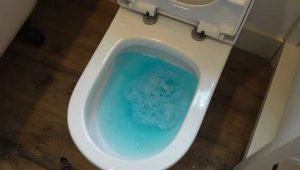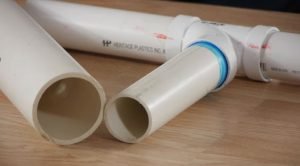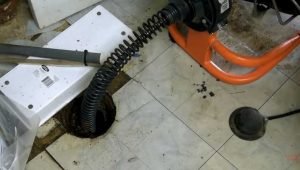After flushing your toilet, you might hear a strange bubbling or gurgling sound. This noise often signals that something is wrong with your plumbing system. It’s not just annoying—it can be an early sign of a more serious issue such as a clogged drain line, blocked vent pipe, or even a problem in the main sewer line.
If you notice your toilet bubbling up every time you flush, it’s time to pay attention.
What Causes Toilet Bubbles After Flushing?
Toilet bubbles occur when air is pushed back into the toilet bowl. This air can come from a buildup of pressure or blockages within the plumbing system. The bubbling sound is the result of trapped air escaping through water. Here’s what could be happening:
1. Air Pressure & Bubbles in Water:
When too much nitrogen or oxygen is present in the water or when water enters the toilet bowl with high pressure, it causes bubbles to rise up through the water. These bubbles may not always indicate a serious issue—but combined with poor flushing or noise, they are worth investigating.
2. Drainage Obstruction or Clog:
A partial or full blockage in the toilet drain, vent pipe, or main sewer line can cause air to be trapped. When water flows down the pipes, it displaces the air, forcing it back up into your toilet bowl.
Common Symptoms of a Bubbling Toilet
If you notice any of these signs, your toilet may be suffering from more than just a minor issue:
- Loud gurgling noise after flushing
- Weak or inconsistent flushing power
- Occasional toilet overflow
- Foul sewer odor near the toilet
- Water splashes or bubbles rising up
- Leaks around the base of the toilet
Unlike minor issues like loose toilet handles or minor flush delays, bubbling often points to a deeper plumbing issue. If not addressed early, it can lead to expensive water damage or sewer backups.
Related Article: How to Fix a Toilet – Common Problems Explained
Why Is This Problem So Serious?
Toilet bubbling isn’t just inconvenient—it can be a warning sign of severe plumbing blockages or ventilation issues. If your system is clogged in multiple places (toilet drain, vent pipe, or sewer line), the air has nowhere to go and escapes through the nearest exit—your toilet bowl.
This is more than just a flushing issue—it’s a system-wide airflow imbalance that can affect your whole home. It’s best not to delay the fix.
Toilet Clogging – Main Cause of Toilet Bubbles & How to Fix It
One of the most common reasons your toilet bubbles or gurgles after flushing is a toilet clog. This is usually the easiest issue to identify, and thankfully, it’s also the easiest to fix—if caught early.
What Causes a Toilet Clog?
Toilets are only designed to handle human waste and toilet paper. However, many people unknowingly flush other materials that cause blockages. Over time, these materials can restrict water and airflow in the toilet drain, creating back pressure. That pressure releases air in the form of bubbles.
Common items that can clog your toilet include:
- Excessive toilet paper
- Baby wipes (even “flushable” ones)
- Large solid waste
- Feminine hygiene products
- Toys or small objects (common with toddlers!)
- Diapers or tissue
- Condoms and cotton swabs
When these items get lodged in the drain trap or further down the drainpipe, they restrict proper water flow—leading to bubbling, poor flushing, and even backups.
💡 Tip: Using a toilet with a wide flush valve or pressure-assisted flush system can help reduce clogging and gurgling issues.
How to Clear a Toilet Clog at Home
If you suspect a clog, don’t panic. There are a few easy DIY methods you can try before calling a plumber.
🔧 Tools You Can Use:
- Toilet plunger (flange or bell-type recommended)
- Toilet auger or plumber’s snake
- Hot water and dish soap
- Baking soda and vinegar
- Wet/dry vacuum (for more serious clogs)
Related Guide: How to Fix a Clogged Toilet
Step-by-Step: Unclogging Your Toilet
Step 1: Hot Water + Dish Soap
Pour a bucket of hot (not boiling) water mixed with dish soap into the bowl. Let it sit for 15–30 minutes. This can soften minor blockages.
Step 2: Baking Soda + Vinegar
Pour 1 cup of baking soda followed by 2 cups of vinegar into the toilet. Allow it to fizz for 20–30 minutes. This works for light clogs and helps reduce odor.
Step 3: Use a Plunger
Place the plunger over the drain hole and use firm but slow thrusts. A few good plunges may break the clog loose.
Step 4: Use a Toilet Auger (if needed)
If the plunger doesn’t work, use a toilet auger to break or retrieve the blockage deep in the trap.
🧰 Detailed Method: How to Unclog a Toilet Without a Plunger
When to Call a Plumber
If you’ve tried all the above and your toilet still bubbles, the blockage may be deeper—possibly in the drain line or even the main sewer. In that case, it’s best to call a licensed plumber to avoid making it worse.

🔧 Quick Tip: Use a No-Clog Toilet
If your toilet bubbles often even after unclogging, consider upgrading to a no-clog toilet. These models have wider flush valves and trapways that allow waste to pass more freely, reducing the risk of air pressure buildup and bubbling.
Clogged Vent Pipes and Negative Air Pressure: A Hidden Cause of Toilet Bubbling
If your toilet continues to bubble even after clearing obvious clogs, your plumbing vent system might be the real culprit. Many homeowners overlook the vent stack, but it plays a critical role in regulating air pressure in your drain system.
What Is a Vent Pipe and What Does It Do?
Your toilet isn’t just connected to a drain—it’s also connected to a vent pipe (also called a vent stack). This vertical pipe extends through your roof and allows air to flow into your plumbing system, balancing pressure and helping waste and water flow smoothly down the drain.
When the vent becomes blocked by leaves, nests, or debris, it creates negative pressure, which pulls air from the toilet bowl instead of allowing it to escape through the vent. This results in a gurgling sound, bubbling, and slow drains throughout the house.
🛠️ Key Role of the Vent Pipe:
Releases sewer gases and maintains neutral air pressure to prevent suction or bubbling in drains.
Signs Your Vent Stack Is Blocked
- Gurgling toilet or sink drains
- Foul sewer odor near drains
- Slow drainage in multiple fixtures
- Bubbling in the toilet after flushing
- Water levels in the toilet bowl fluctuate
Related Guide: Easy Steps to Fix a Toilet Handle

How to Unclog a Vent Pipe
Clearing a clogged vent stack isn’t as easy as plunging a toilet—but it’s doable if you’re careful and don’t mind climbing your roof.
🪜 Step-by-Step Instructions:
Step 1: Locate the Vent Pipe
Usually, this is a small pipe protruding from your roof.
Step 2: Check for Visible Debris
Use a flashlight or camera to inspect for leaves, twigs, or animal nests. Birds, squirrels, and insects often make homes in exposed vents.
Step 3: Clear the Vent Gently
Use a plumber’s snake or garden hose to push out light debris. Be careful not to push obstructions deeper into the stack.
Step 4: Flush with Water
Once cleared, run water through the pipe to ensure it drains properly.
Step 5: Install a Vent Cap
To avoid future blockages, install a protective screen or vent cap.
When to Call a Professional
If you’re uncomfortable with heights or the blockage is deep inside the pipe, contact a professional plumber. They can use specialized tools like air compressors or plumbing cameras to fix the issue quickly and safely.
🔍 Pro Tip: Don’t Ignore Sewer Odors
If you notice a bad smell along with bubbling, it could be gas buildup due to blocked ventilation. Sewer gases can be dangerous and should be taken seriously.
Main Sewer Line Clogs: The Silent Troublemaker Behind Bubbling Toilets
If you’ve ruled out a toilet clog and checked the vent pipe with no results, the problem may lie deeper—in your main sewer line. This is one of the most serious causes of a bubbling toilet and typically requires professional attention.
What Is the Main Sewer Line?
The main sewer line is the central drainage system in your home that connects all secondary drain pipes—from toilets, showers, sinks, washing machines, and dishwashers—to the municipal sewer system or a septic tank.
When this line is blocked or damaged, wastewater and air can’t flow away properly. As a result, air backs up into your plumbing and escapes through the toilet, producing a bubbling or gurgling noise when you flush.
Common Causes of Mainline Clogs
- Tree roots infiltrating and breaking through underground pipes
- Collapsed or broken sewer pipes due to shifting soil
- Heavy grease buildup in older pipes
- Flushing inappropriate materials over time
- Foreign objects (toys, wipes, hygiene products) making their way into the main line
🛠️ Did You Know? Tree roots are one of the most common causes of long-term mainline damage in older homes.

Signs of a Main Sewer Line Problem
- Bubbling/gurgling sounds from multiple toilets or sinks
- Frequent toilet backups across multiple bathrooms
- Slow drainage throughout the house
- Water backing up into tubs or floor drains
- Sewage odor around toilets or the yard
Related Resource: How to Drain a Toilet – Easy Steps for Bowl & Tank
Why You Can’t Fix This Yourself
Unlike a toilet clog or vent blockage, main sewer line issues require advanced tools and professional diagnosis. You can’t reach these lines with a basic auger or home tools.
A professional plumber can:
- Perform a camera inspection to locate the blockage
- Use a power auger or hydro jet to clear the line
- Identify pipe damage or collapse for replacement
What to Do If You Suspect a Mainline Block
- Stop using all plumbing fixtures to prevent sewage backup.
- Call a licensed plumber to diagnose the issue immediately.
- Notify your neighbors if you live in a shared system.
- Contact the city sewer authority if the blockage affects multiple homes—they may be responsible for repairs beyond your property line.
Important: If you live in a rental or HOA-managed property, notify your landlord or property manager immediately.
When to Call the City
If your plumber identifies that the problem lies beyond your home’s main sewer cleanout—such as on the city’s line—they will inform you. In such cases, the municipality is typically responsible for addressing the issue.
Helpful Guide: How to Fix a Running Toilet Easily
Final Thoughts + FAQs: What to Do Next and How to Prevent Bubbling Toilets
A bubbling toilet isn’t just an odd plumbing quirk—it’s a red flag. Whether caused by a clogged toilet, blocked vent stack, or main sewer line issue, ignoring the gurgling sound can lead to major water damage, sanitation hazards, and expensive repairs.
Final Thoughts: What Should You Do?
- If the bubbling happens only in one toilet and flushing is weak — it’s likely a toilet clog.
- If you hear gurgling across multiple drains or smell sewer gas — check for a clogged vent pipe.
- If all drains are slow and your yard smells foul — it could be a main sewer line problem.
You can often solve minor issues like clogs or vent pipe obstructions with DIY methods. But if the problem is persistent or affects the whole house, don’t wait—call a professional plumber.
Tip: Prevent future problems by avoiding flushing non-degradable materials and scheduling annual plumbing inspections.
FAQs – Frequently Asked Questions
❓ Why is my toilet bubbling but still flushing fine?
Even if the toilet flushes, bubbling may indicate a partial blockage or air pressure imbalance. This can develop into a complete clog if ignored.
❓ Can high water pressure cause toilet bubbling?
Yes, excessive water pressure can sometimes cause bubbling, especially if the system has air trapped in the lines. However, this is rare compared to clogs and venting issues.
❓ Is it safe to use a bubbling toilet?
It’s not immediately dangerous, but it indicates a plumbing problem. Continued use can lead to leaks, overflow, and even raw sewage backup if left unresolved.
❓ How much does it cost to fix a bubbling toilet?
DIY fixes may cost nothing. Hiring a plumber ranges from $100 to $500, depending on the problem. Main sewer line repairs or replacements can exceed $1,000–$5,000.
❓ How do I prevent toilet bubbling?
- Don’t flush non-flushable items
- Install drain screens
- Have regular plumbing inspections
- Add a vent cover on your roof
- Consider upgrading to a no-clog toilet
❓Could bubbling indicate a septic tank problem?
If your home uses a septic system, bubbling may signal an overflowing or malfunctioning tank. Check if other drains are affected and call a septic service professional immediately.
Final Tip
Bubbling toilets may start as minor annoyances, but they’re often early indicators of bigger problems. Address them promptly to avoid costly repairs, unpleasant odors, and health risks. If you’re not confident in your DIY plumbing skills, always rely on a licensed professional.
Hi, this is Robert Crossan, the owner of this website, has 17 years of experience in the installation, maintenance, and repair of toilets and plumbing systems. After completing the Level 2 Basic Plumbing course in 2005, I started working in both domestic and commercial buildings as a professional plumber. So I can figure out the core difference between different toilet models and brands. It also helped me monitor their work performance and setbacks.